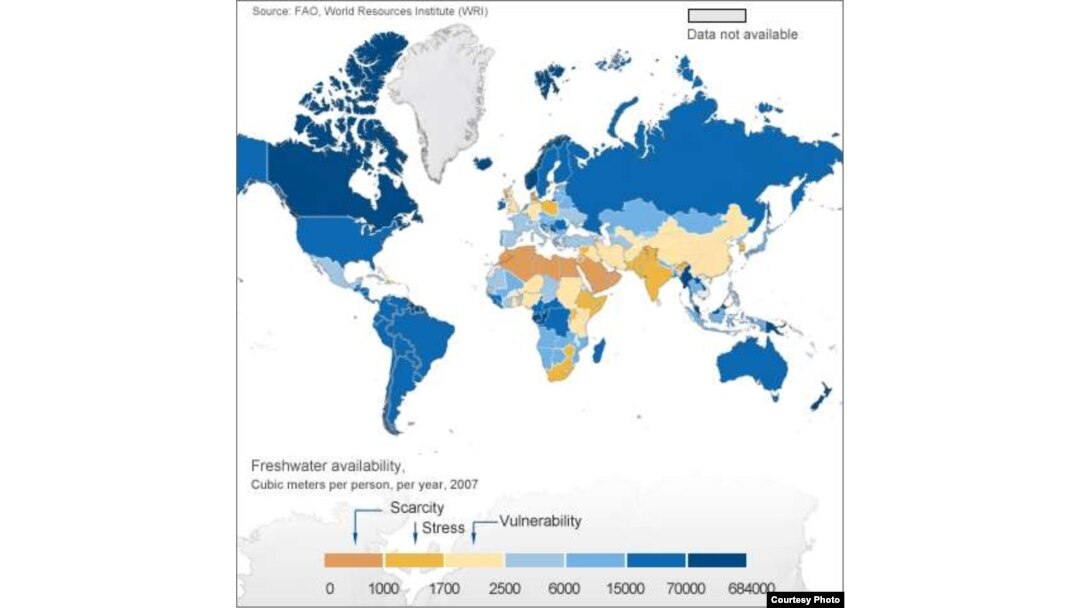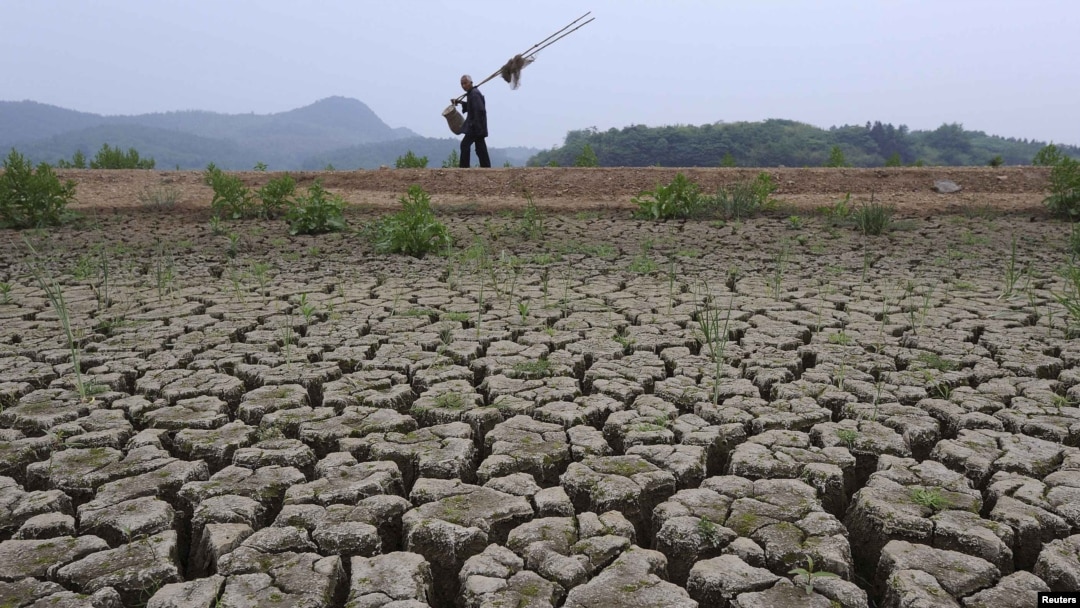WASHINGTON -- A new U.S. report predicts that increasing water scarcity and other water-related problems could trigger conflicts between countries and lead to the failure of states in the coming decades.
It also warns that water issues could be manipulated by terrorists.
The report, released to coincide with the UN's World Water Day on March 22, is based on a classified intelligence analysis of water security that was requested by U.S. Secretary of State Hillary Clinton.
At a Water Day ceremony in Washington, the top U.S. diplomat said the findings were cause for concern.
"I think it's fair to say the intelligence community's findings are sobering," Clinton said. "As the world's population continues to grow, demand for water will go up, but our fresh water supplies will not keep pace."
'Major Challenges'
According to the report, a "water-related state-on-state conflict is unlikely during the next 10 years," but the chances should increase after 2022.

CLICK TO ENLARGE (Courtesy of VOA)
In particular, the report predicts that North Africa, the Middle East, and South Asia will encounter "major challenges" with booming populations facing water shortages.
These challenges may be compounded by the fact that floods and droughts intensified by climate change could threaten food supplies.
The report also warns that countries which currently rely on negotiations to deal with issues concerning shared water resources may be pushed to less peaceful measures.
"Within states, [water issues] could cause some states to fail outright," Clinton said. "You could see regional conflicts among states that share water basins [become] exacerbated and even lead to violence."
Clinton also cautioned that, short of spurring armed conflict, water scarcity could be increasingly used as a "political tool."
The report also addresses the possibility that in the future, with more pressure put on the world's water resources, terrorists could attack dams or reservoirs that ensure water supplies for people, agriculture, or industry.
Signs Of Hope
While it does not identify the countries thought to be most at risk in the coming decades, the document does focus on specific rivers and basins, including the Nile, the Jordan, the Mekong, the Tigris and Euphrates in Iraq, and the Amu Darya in Central Asia.
Despite the bleak predictions coming from Washington, new figures released by the United Nations on March 22 do offer some hope.
The World Health Organization and the UN Children's Fund said more than 2 billion people gained access to drinking water in the decade ending in 2010 as a result of efforts to improve piping and protect wells.
The agencies said that improved drinking water will be available to 92 percent of the world's population within three years.
But the UN also acknowledged looming problems.
The office of UN Secretary-General Ban Ki-moon noted that some 800 million still lack a safe supply of fresh water.
Ban said in a statement that “investments in water infrastructure, rural development, and water resource management will be essential” to mitigate future water-related challenges.


